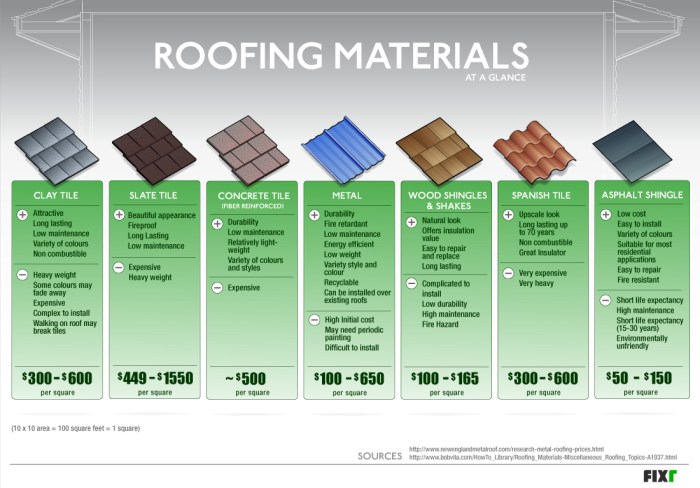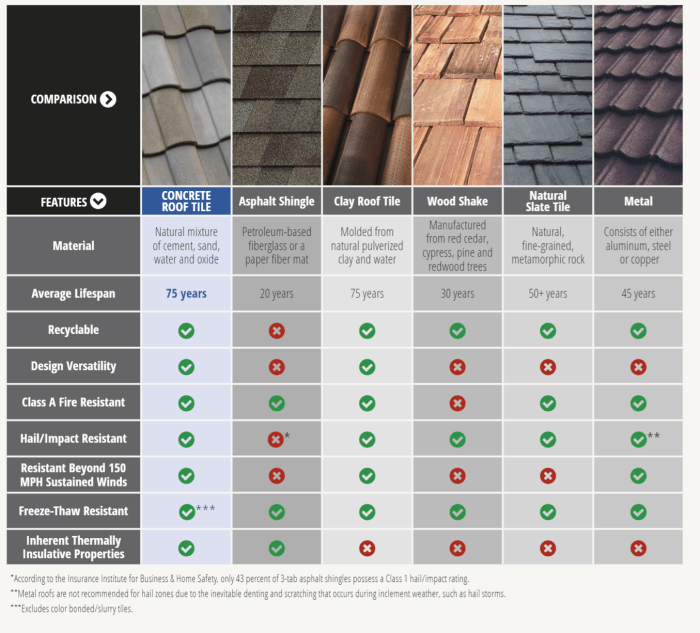Fine Homebuildings Top Roofing Materials Comparison: A Comprehensive Guide
Embark on a journey through Fine Homebuilding’s Top Roofing Materials Comparison, where the significance of high-quality roofing materials is explored in detail. This guide delves into the criteria used to assess and compare different roofing materials, offering valuable insights for homeowners and contractors alike.
Introduction to Fine Homebuilding’s Top Roofing Materials Comparison

Choosing high-quality roofing materials is crucial for the durability and performance of a home's roof. The right materials can enhance energy efficiency, protect against harsh weather conditions, and increase the overall value of a property.
Fine Homebuilding evaluates and compares roofing materials based on various criteria such as durability, cost-effectiveness, ease of installation, and environmental impact. This comprehensive analysis allows homeowners and contractors to make informed decisions when selecting the best roofing materials for their specific needs.
Criteria Used for Evaluation
- Durability: Assessing the longevity and resilience of the roofing materials.
- Cost-effectiveness: Evaluating the initial cost and long-term maintenance expenses.
- Installation: Considering the ease of installation and any specialized skills required.
- Environmental Impact: Examining the sustainability and eco-friendliness of the materials.
Significance for Homeowners and Contractors
The comparison of top roofing materials by Fine Homebuilding provides valuable insights for homeowners looking to invest in a new roof that will stand the test of time. Contractors can also benefit from this information to offer recommendations to their clients based on the most reliable and efficient materials available in the market.
Asphalt Shingles
Asphalt shingles are one of the most popular roofing materials due to their affordability, versatility, and ease of installation. They are composed of a base material (either fiberglass or organic) coated with asphalt and mineral granules.
Types of Asphalt Shingles
- 3-Tab Shingles: These are the most basic and affordable type of asphalt shingles. They are relatively thin and have a flat appearance.
- Architectural Shingles: Also known as dimensional or laminate shingles, these are thicker and provide a more textured look. They are more durable and offer better wind resistance.
- Designer Shingles: These high-end shingles mimic the look of slate, wood, or other premium materials. They are the most expensive but offer superior aesthetics.
Durability, Cost, and Aesthetics
When comparing different types of asphalt shingles, durability, cost, and aesthetics are key factors to consider. 3-tab shingles are the most budget-friendly but have the shortest lifespan, usually around 15-20 years. Architectural shingles are more durable, lasting 25-30 years, and come at a higher cost.
Designer shingles can last 30+ years and offer the most aesthetic appeal but come with a premium price tag.
Installation and Maintenance
Installing asphalt shingles is a straightforward process that involves laying down a waterproof underlayment, followed by the shingles themselves. Proper installation is crucial for the longevity and performance of the roof. Maintenance for asphalt shingles typically involves periodic inspections for damage, cleaning debris, and replacing any damaged shingles to prevent leaks and prolong the roof's lifespan.
Metal Roofing
Metal roofing is a popular choice for homeowners due to its durability and energy efficiency. In this section, we will explore the benefits of metal roofing, compare different types of metal roofing materials, and discuss the cost implications and environmental impact.
Types of Metal Roofing Materials
Metal roofing materials come in various options such as steel, aluminum, and copper. Each material has its own unique features and benefits:
- Steel: Steel is a popular choice for metal roofing due to its affordability and durability. It is resistant to fire, mildew, and insects, making it a low-maintenance option for homeowners.
- Aluminum: Aluminum is lightweight, corrosion-resistant, and environmentally friendly. It is a great choice for coastal areas or regions with high humidity.
- Copper: Copper roofing is known for its beautiful patina that develops over time. It is extremely durable and can last for decades with proper maintenance.
It is important to consider the climate and location of your home when choosing the right metal roofing material.
Longevity and Energy Efficiency
One of the main benefits of metal roofing is its longevity. Metal roofs can last 50 years or more, outperforming traditional asphalt shingles. Additionally, metal roofing is energy efficient as it reflects solar heat, reducing cooling costs in the summer months.
Cost Implications and Environmental Impact
While metal roofing may have a higher upfront cost compared to other roofing materials, it pays off in the long run due to its durability and energy efficiency. Metal roofing is also recyclable, making it an environmentally friendly choice for homeowners looking to reduce their carbon footprint.
Wood Shingles and Shakes
Wood shingles and shakes are traditional roofing materials made from natural wood, often cedar or redwood. They provide a classic and rustic look to homes while offering durability and insulation benefits.
Unique Features of Wood Shingles and Shakes
Wood shingles are machine-cut with a smooth and uniform appearance, while shakes are hand-split for a more textured and rugged look. Both options are available in various sizes and thicknesses to suit different aesthetic preferences.
- Wood shingles and shakes are eco-friendly and biodegradable, making them a sustainable roofing choice.
- They offer natural insulation, helping to regulate indoor temperatures and reduce energy costs.
- Wood roofing can withstand harsh weather conditions, including heavy snowfall and strong winds.
Pros and Cons of Using Wood as a Roofing Material
Wood shingles and shakes have their own set of advantages and disadvantages that homeowners should consider before opting for this roofing material.
- Pros:
- Natural beauty and aesthetic appeal.
- Durable and long-lasting when properly maintained.
- Excellent insulation properties.
- Cons:
- Higher initial cost compared to other roofing materials.
- Requires regular maintenance to prevent rot, mold, and insect infestations.
- Potential fire hazard if not treated with fire-retardant chemicals.
Maintenance Practices for Wood Shingles and Shakes
To prolong the lifespan of wood roofing and maintain its appearance, proper maintenance practices are essential.
- Regularly inspect the roof for any signs of damage, such as cracks, splits, or rot.
- Clean the roof surface to remove debris, algae, and moss that can trap moisture and cause decay.
- Treat the wood with preservatives and sealants to protect against weathering and UV damage.
Final Wrap-Up

In conclusion, Fine Homebuilding’s Top Roofing Materials Comparison provides a wealth of information to help you make informed decisions about your roofing needs. From asphalt shingles to metal roofing and wood shingles, this guide equips you with the knowledge to choose the best option for your home.
User Queries
What factors should I consider when selecting roofing materials?
Factors to consider include durability, cost, aesthetics, and maintenance requirements. Fine Homebuilding’s comparison can help you weigh these factors effectively.
What are the benefits of metal roofing compared to other materials?
Metal roofing offers longevity, energy efficiency, and a range of material options like steel, aluminum, and copper, each with its unique advantages.
How can I prolong the lifespan of wood shingles and shakes?
Regular maintenance practices such as proper cleaning, sealing, and repairs can help extend the lifespan of wood roofing materials.